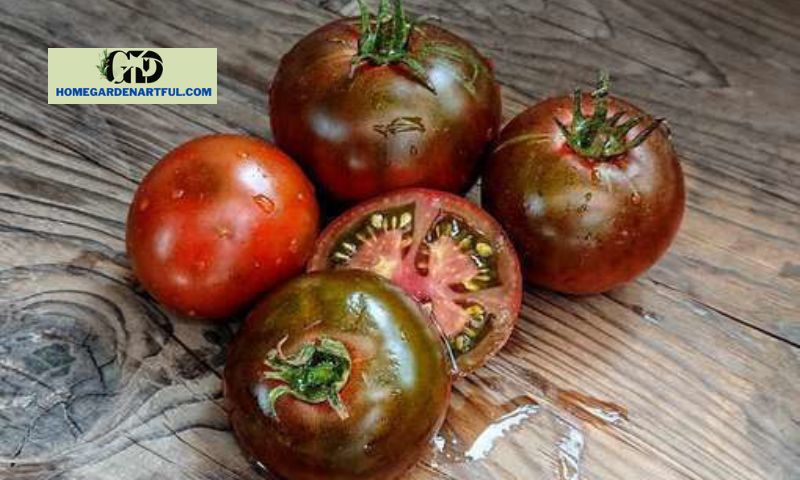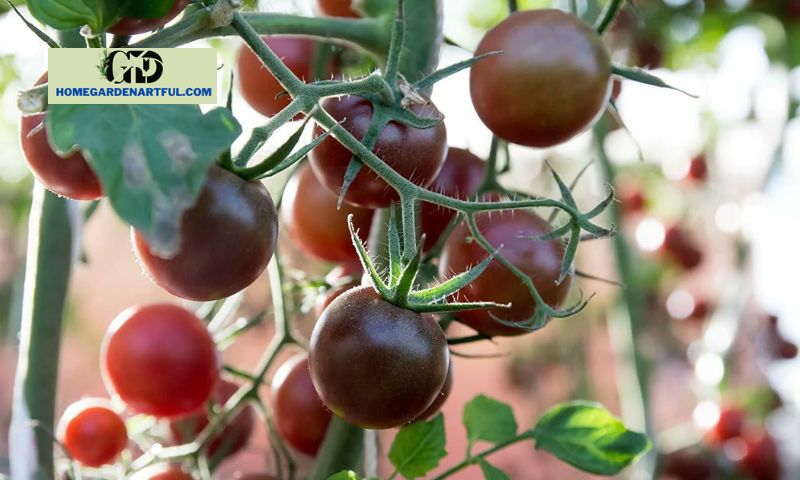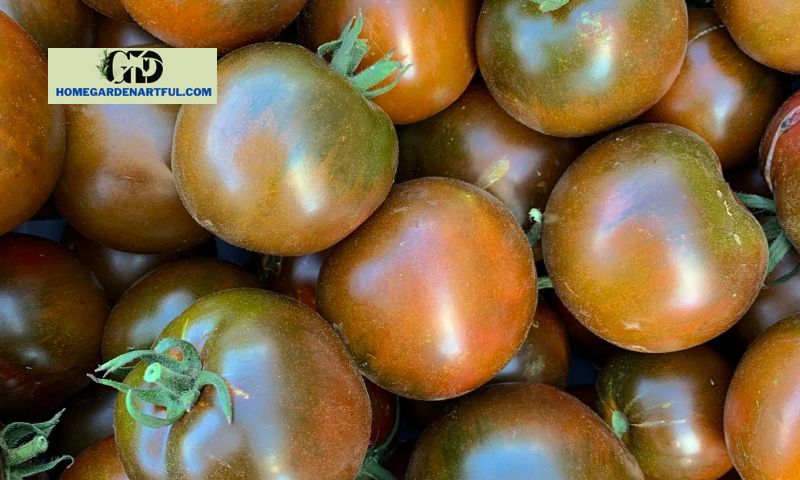Tomatoes are easy to appreciate because of their flavor, regardless of whether you classify them as veggies or fruit for scientific or culinary purposes.
Try the black prince tomatoes if you concur and want to broaden your horizons! You won’t regret including it in your garden because it is striking in appearance and flavor, and homegardenartful.com will explain why.
A Synopsis of Black Prince Tomatoes’ History

The Siberian black prince tomato is renowned for thriving in chilly climates. Since its invention in the middle of the 20th century, it has gained popularity there as a food and pharmaceutical ingredient, with demand progressively expanding throughout Asia and Eastern Europe as well.
However, it has just recently become well known in the United States, where it is treasured for its flavor and propensity to thrive.
Appearance
Black prince tomatoes are easily distinguished from other varieties by their dark greenish-red or brownish-red colors, which are likely the result of an overabundance of green pigments. The seeds are tucked inside the juice and are soft and of a similar color as the inner flesh.
Each tomato is a spherical object with a diameter of two to three inches.
Taste Compared to the more typical garden tomato, these tomatoes are recognized for having a rich, sweet flavor. Every bite gives you a surge of flavor since the flesh is so ripe and luscious.
How to Grow Black Prince Tomatoes

You could feel more motivated than ever to plant black prince tomatoes in your own garden now that you understand the basics of them. You’ll love how easy they are to grow; they are resilient and do well in chilly areas. However, in order to appreciate them to their fullest, you might need some professional advice, which we’re happy to provide!
Planting
Although the fruit can endure freezing temperatures, you should plant it in the early spring when there is no possibility of a frost. Place the seeds at least 2 to 3 feet apart in a place that receives direct sunlight.
While tomatoes can be grown on the ground, they are less likely to be harmed by pests if they are allowed to climb a trellis, fence, post, or cage. In either case, they require a lot of space because they could grow to be six to nine feet long.
Nurturing
Black Prince tomatoes are no exception to the rule that tomatoes require a lot of nutrition. Use fertilizer or compost after planting to replenish the soil’s nutrients.
If it doesn’t rain, give them approximately an inch of water each week. If the outside temperature is continuously over 60 degrees Fahrenheit, increase that by at least half an inch. Additionally, prune the vines as necessary to ensure that the most vital areas of the plants receive adequate nutrition.
Defending

Black Prince tomatoes are vulnerable to several different diseases, but fusarium wilt is perhaps the most widespread.
It is a fungus that causes yellowing of the bottom leaves and discoloration of the stem. Even if your plants don’t perish, you might anticipate them to yield fewer fruit than typical after taking longer than usual to do so.
Usually, the issue may be simply prevented by making sure your tomatoes receive regular nutrition and water. Additionally beneficial in cool soil, and mulch is an excellent temperature controller.
Other common pests that affect tomato plants include aphids, fruit worms, beetles, slugs, and snails. Use homemade or natural pesticides to keep them at bay. In particular, peppermint oil seems to keep the majority of insects away.
Harvesting
The majority of black prince tomatoes can be picked 60 to 70 days after planting. While the tops are still somewhat green, ripe ones will have their distinctively dark skin, and the flesh will give little when squeezed.
Simply remove the tomatoes from the vines a few times every week. Hold them in a wheelbarrow, bucket, or basket.
Conclusion
The majority of tomato cultivars are either planted as slicers for eating fresh or as paste kinds for cooking. Both applications of the Black Prince are highly regarded. Many chefs opt for it while making pizza or pasta sauces even though it isn’t categorized as a paste or plum tomato. It supports the belief that tomatoes with the deepest colors frequently win taste tests and are as delicious when added to a sandwich or eaten raw.


